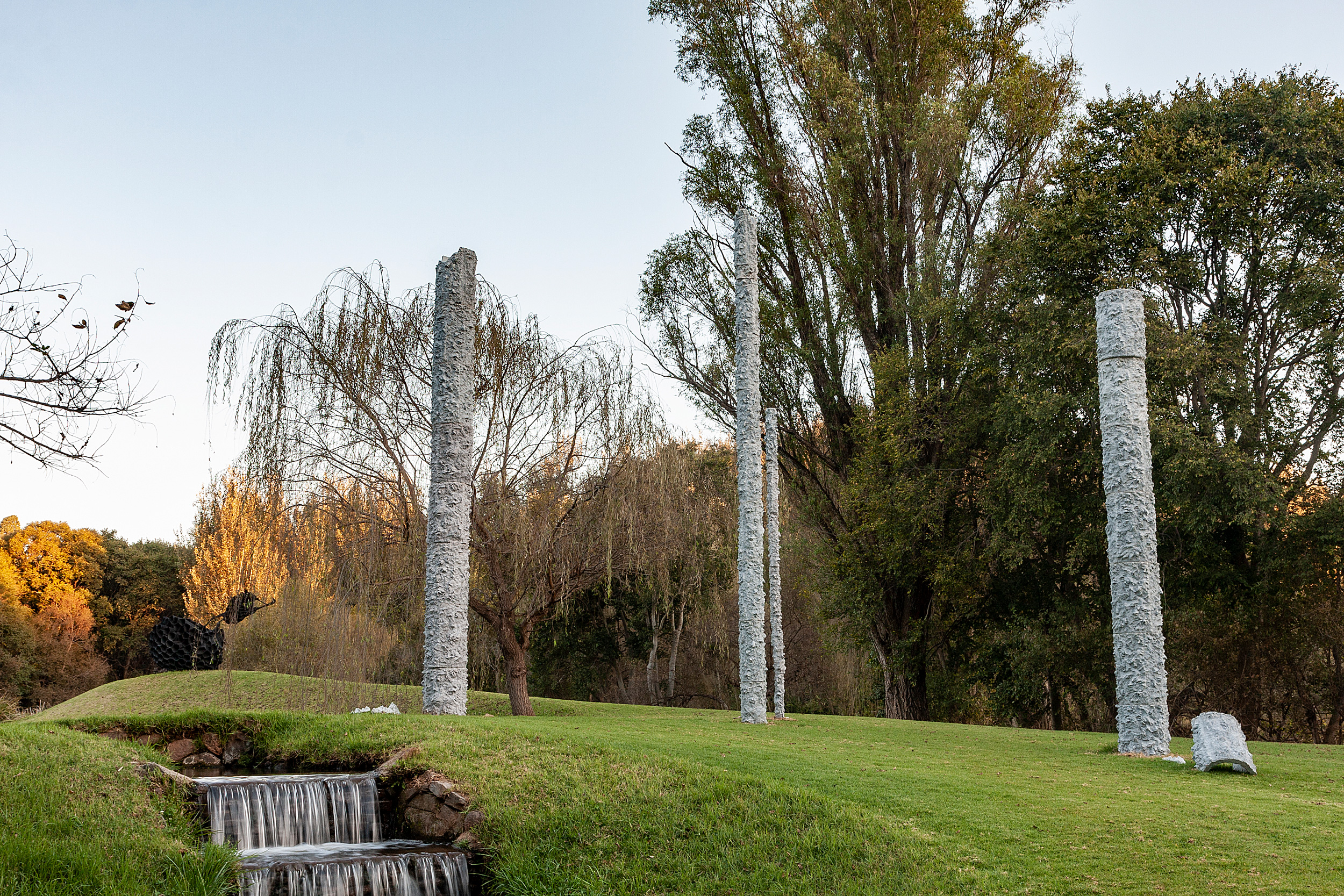
Installation view of Relic (2019 - 2021), included in Margins of Error at The Nirox Sculpture Garden, Johannesburg
Chris Soal’s first outdoor sculptural installation, Relic (2019 - 2021), consists of various sized concrete sections,installed in the landscape in numerous configurations,almost as if presenting these totemic forms in various states of decay. Drawing on his continuous body of work with toothpicks, the artist poured concrete over sculpted toothpick forms, before removing each toothpick, leaving being its haunting impression. The residual forms and textures of the surface are suggestive without being descriptive, drawing comparisons to barren topographies, dead coral, rough tree bark, and eroded marble — their abstraction leaving multiple avenues of interpretation open.
Recognising that many public sculpture needs to contend with the problem of “the monument,” the decision to create columns, large and looming phallic forms, was intentional. It felt like a problem that couldn’t be avoided, and instead an issue that needed to be addressed. The construction of these concrete surfaces through thevoid impressions of toothpicks, a material so insignificant and ubiquitous, felt like a fitting way to undermine the power that structures so erected often attempt tocommunicate. Soal references Percy Bysshe Shelley’s poem, “Ozymandias” (1818):
“I met a traveller from an antique land,
Who said—“Two vast and trunkless legs of stone Stand in the desert. . . . Near them, on the sand, Half sunk a shattered visage lies, whose frown,
And wrinkled lip, and sneer of cold command,
Tell that its sculptor well those passions read
Which yet survive, stamped on these lifeless things, The hand that mocked them, and the heart that fed; And on the pedestal, these words appear:
My name is Ozymandias, King of Kings;
Look on my Works, ye Mighty, and despair!
Nothing beside remains. Round the decay
Of that colossal Wreck, boundless and bare
The lone and level sands stretch far away.”
Recognising that many public sculpture needs to contend with the problem of “the monument,” the decision to create columns, large and looming phallic forms, was intentional. It felt like a problem that couldn’t be avoided, and instead an issue that needed to be addressed. The construction of these concrete surfaces through thevoid impressions of toothpicks, a material so insignificant and ubiquitous, felt like a fitting way to undermine the power that structures so erected often attempt tocommunicate. Soal references Percy Bysshe Shelley’s poem, “Ozymandias” (1818):
“I met a traveller from an antique land,
Who said—“Two vast and trunkless legs of stone Stand in the desert. . . . Near them, on the sand, Half sunk a shattered visage lies, whose frown,
And wrinkled lip, and sneer of cold command,
Tell that its sculptor well those passions read
Which yet survive, stamped on these lifeless things, The hand that mocked them, and the heart that fed; And on the pedestal, these words appear:
My name is Ozymandias, King of Kings;
Look on my Works, ye Mighty, and despair!
Nothing beside remains. Round the decay
Of that colossal Wreck, boundless and bare
The lone and level sands stretch far away.”
Reminiscent of columns, Relic (2019 - 2021) suggests a link to ancient empires, globally. These totems of “the never ending human struggle to leave an impressionthat lingers longer than our lifespans”, calls the viewer to reflect on their complicity ina disordered hierarchy of values fuelled by consumerism, while prophesying of the potential doom that inevitably awaits a near-decadent society. It is no accident then that Relic is unveiled in what is called the Cradle of Humankind, a site well known forfossil finds.
The decayed, fragmented and ruinous suggestion of the toothpick-less surface of the concrete might remind one of the forms in Max Ernst’s iconic “Europe after the Rain” (1940 - 1942), a direct challenge to the modernist aspirations that architecture’s pride in concrete held. Furthermore, the concrete recalls the proximity of Johannesburg in the Eden-like context of the landscaped park.
One of the paradoxes of ruins is how their collapse opens them up, exposing the interior to the exterior. If a present monument is a future ruin, then Relic poses the question not of what is present, but of what is absent. How then can the evidence of things unseen provoke us as viewers to look beyond ourselves? How could a ruin expose our interior spaces, our hidden motives, so that we may not be left, ruined?
The decayed, fragmented and ruinous suggestion of the toothpick-less surface of the concrete might remind one of the forms in Max Ernst’s iconic “Europe after the Rain” (1940 - 1942), a direct challenge to the modernist aspirations that architecture’s pride in concrete held. Furthermore, the concrete recalls the proximity of Johannesburg in the Eden-like context of the landscaped park.
One of the paradoxes of ruins is how their collapse opens them up, exposing the interior to the exterior. If a present monument is a future ruin, then Relic poses the question not of what is present, but of what is absent. How then can the evidence of things unseen provoke us as viewers to look beyond ourselves? How could a ruin expose our interior spaces, our hidden motives, so that we may not be left, ruined?
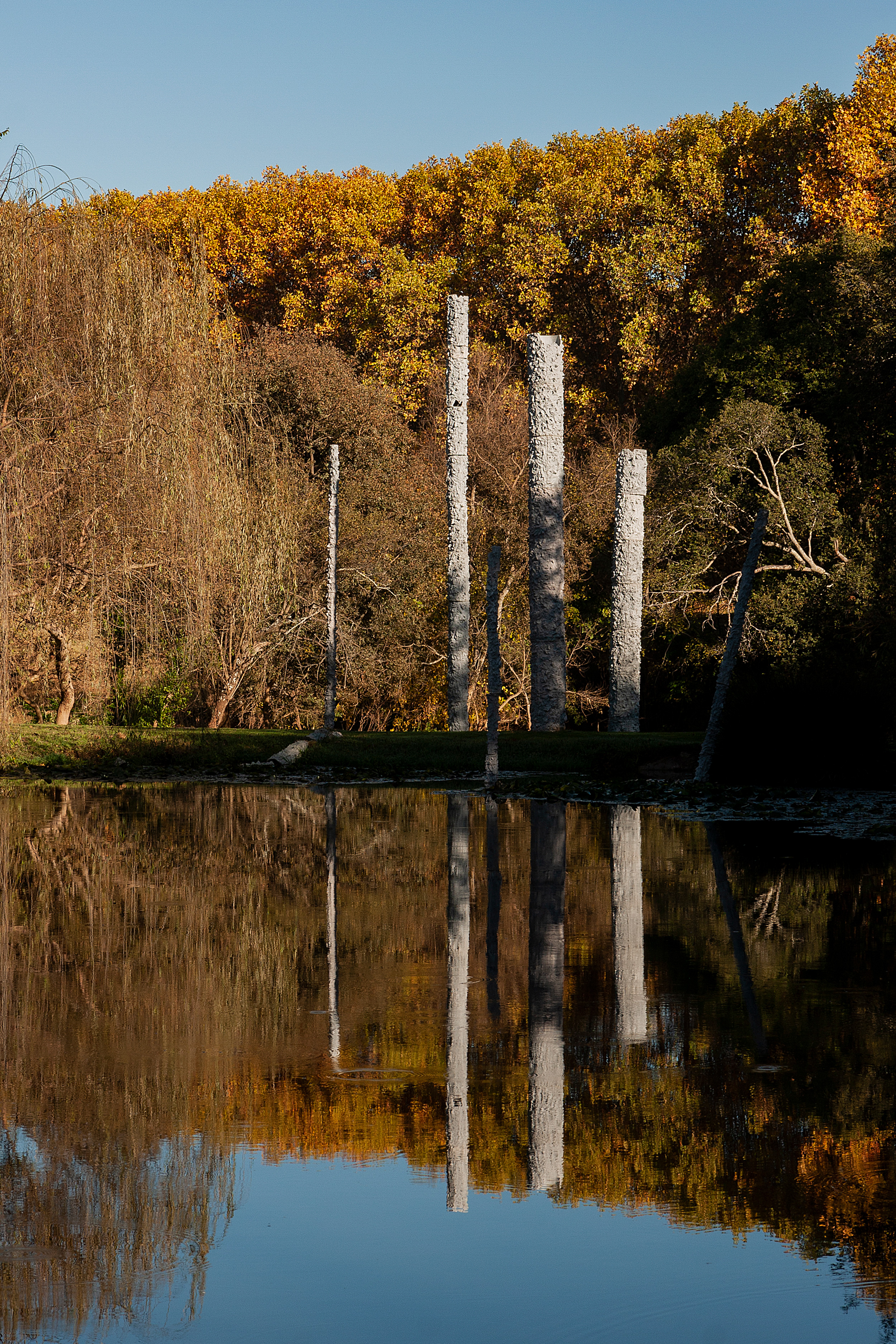
Relic, 2021
Glass Fibre Reinforced Concrete Reliefs
Dimensions Variable
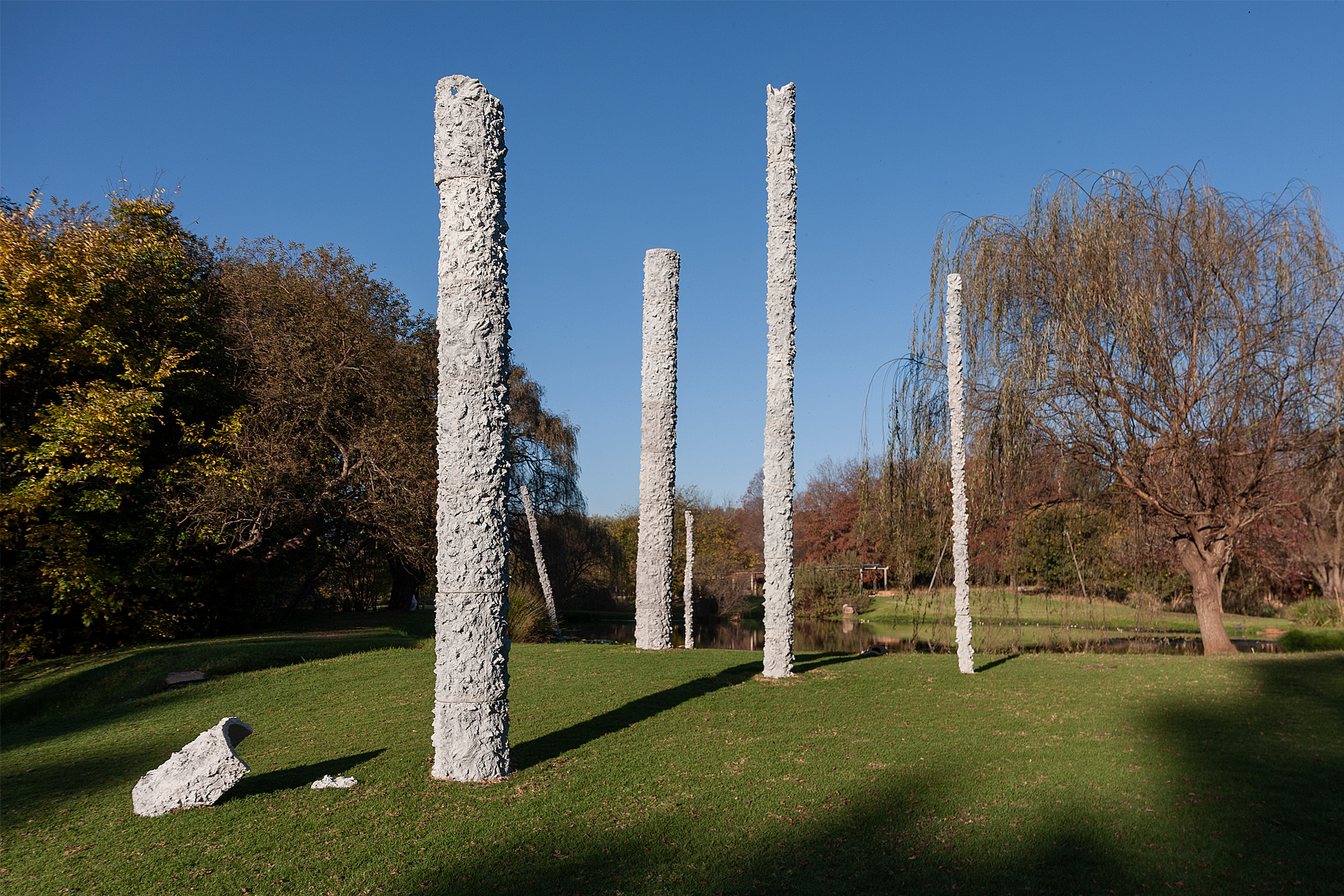
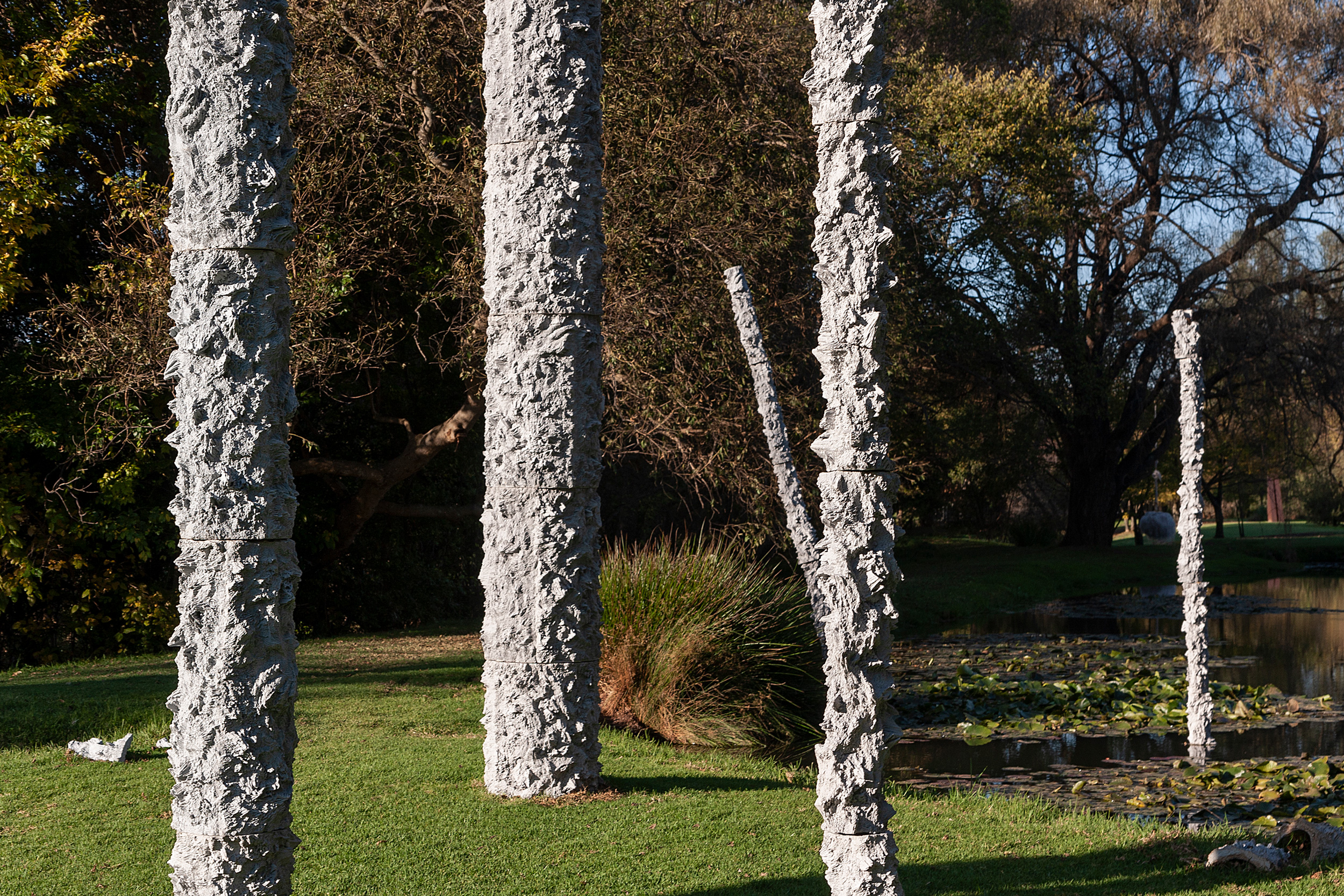
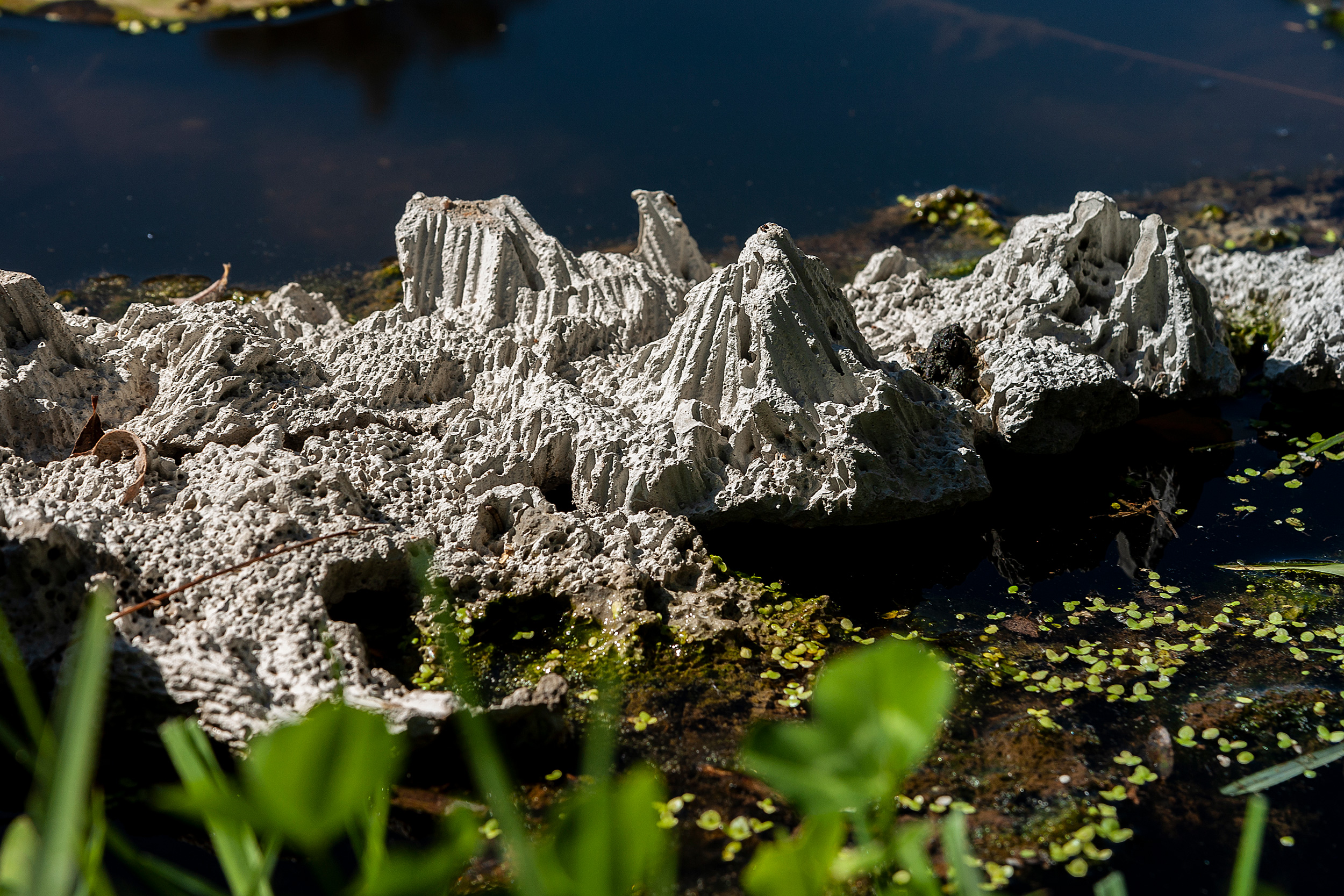
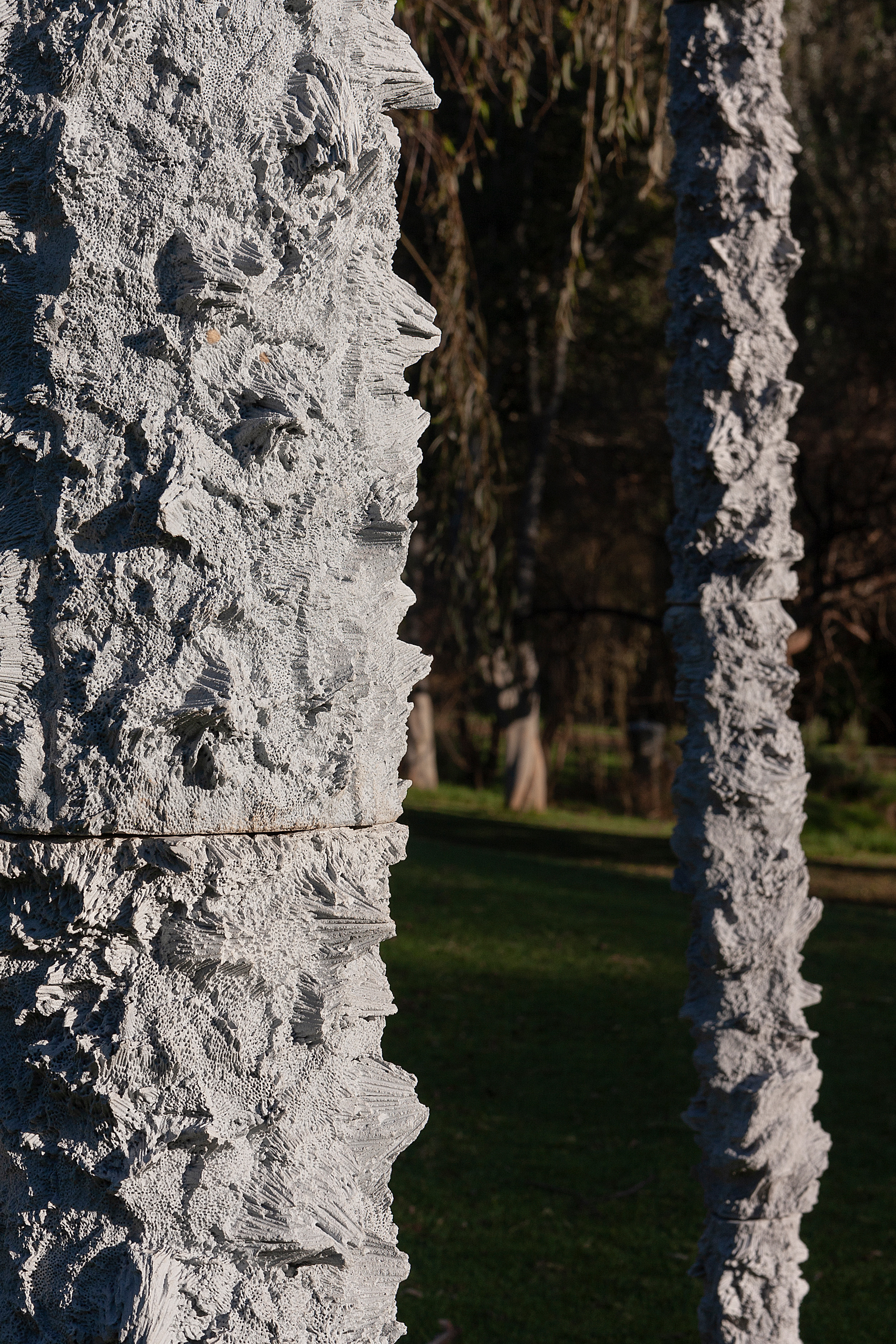
Relic, 2021
Glass Fibre Reinforced Concrete Reliefs
Dimensions Variable


Relic, 2021
Glass Fibre Reinforced Concrete Reliefs
Dimensions Variable
The artist acknowledges the support of the The Claire and Edoardo Villa Will Trust, whose grant made much of the production behind this work possible.
Acknowledgement also goes to the Soal Studio team: Jonathan Illunga, Israel Sambuka, Dean van Wyk, to VM Engineering, and many others who have been integral to bringing this project into existence.
Acknowledgement also goes to the Soal Studio team: Jonathan Illunga, Israel Sambuka, Dean van Wyk, to VM Engineering, and many others who have been integral to bringing this project into existence.